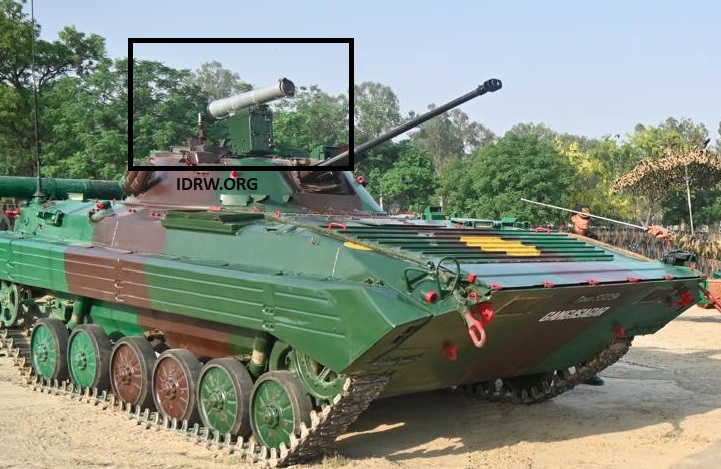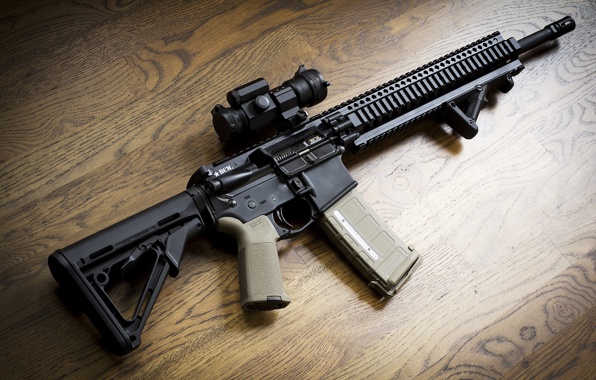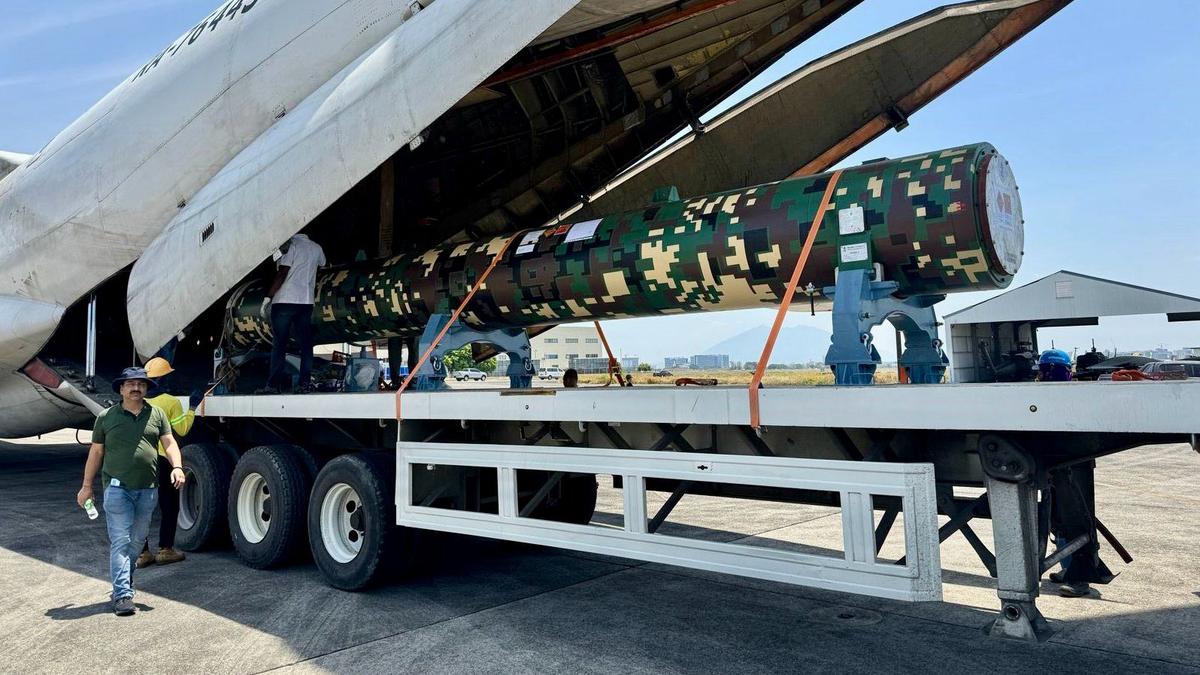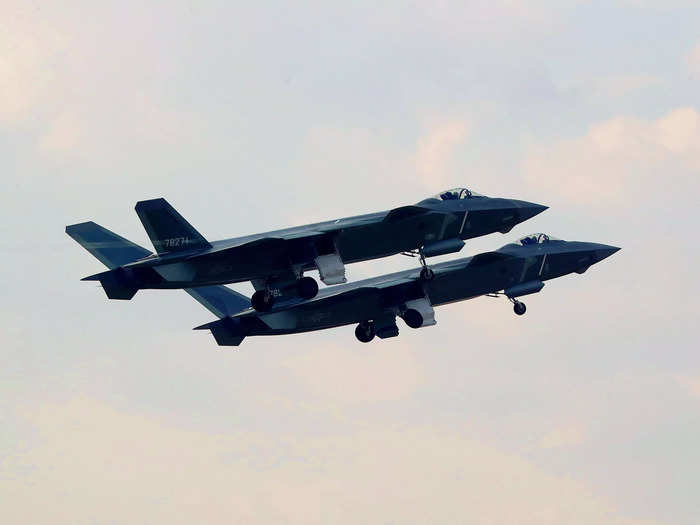SOURCE: IDRW.ORG

The Indian Army has recently showcased an upgraded variant of the BMP-2 Infantry Fighting Vehicles (IFVs), featuring a unique configuration designed in-house. The most notable upgrade includes the integration of a single-launcher 3rd Generation Anti-Tank Guided Missile (ATGM), providing a significant boost in firepower.
The upgraded BMP-2 IFVs now sport a single-launcher 3rd Gen ATGM, a testament to the innovative capabilities of the Indian Army’s in-house design team. This modification aims to enhance the vehicle’s anti-tank capabilities, ensuring that it remains a formidable asset on the battlefield. Additionally, a twin-launcher configuration for the ATGMs has also been developed, offering even greater firepower and versatility. This twin-launcher setup will be implemented in the interim, providing the Army with enhanced strike capabilities until a comprehensive upgrade is completed.
Continue readingSOURCE: IDRW.ORG

Traditionally, military ties between India and Germany have been limited. However, with a changing global security landscape marked by Russia’s war in Ukraine and China’s growing assertiveness, both nations are re-evaluating their defence partnership.
This renewed focus on collaboration comes after recent amendments to Germany’s defence export laws. This shift has opened doors for potential joint ventures between Indian and German defence industries.
Continue readingSOURCE: AFI

The Indian Army is gearing up to deploy its first batch of robotic MULES (Multi-Utility Legged Equipment) – dog-shaped machines designed for surveillance and logistics in challenging terrain.
According to sources within the defense establishment, a September 2023 emergency procurement order secured 100 of these robotic companions. A pre-dispatch inspection of the first 25 MULES has been completed, paving the way for their imminent induction into the Army.
Continue readingSOURCE: AFI

An Indo-Russian company’s vendor, M/s BSS Material from Amethi, has filed a petition in the Delhi High Court contesting its exclusion from the bidding process for a massive ?12,000 crore contract to supply close-quarter battle carbines to the Indian Army.
The crux of the petition revolves around alleged “ambiguity” in the bidding process. M/s BSS Material claims the technical evaluation committee (TEC) mistakenly considered their financials instead of those of the original equipment manufacturer (OEM), IRRPL.
Continue readingSOURCE: AFI

In 2019, the Indian Air Force’s (IAF) plan to equip its Mirage 2000 fighter jets with long-range Meteor air-to-air missiles faced a setback. Dassault Aviation, the manufacturer of the Mirage 2000, and MBDA, the maker of the Meteor missile, declined the integration due to two key factors.
Integrating the Meteor missile with the Mirage 2000 would have necessitated significant modifications to the aircraft’s systems. These modifications were deemed too expensive by both Dassault and MBDA.
Continue readingSOURCE: AFI

The Philippines’ Ambassador to India, Josel Francisco Ignacio, emphasized on Monday that the BrahMos missiles provide a “credible defense” capability for the Southeast Asian nation. This development, he noted, signifies India’s “rising” prowess in the defense sector.
Speaking at an event organized by the Observer Research Foundation (ORF), Ignacio highlighted the evolving dynamics between India and the Philippines. “India and the Philippines stand at the cusp of a new phase of its relations, with more engagement. We are prying open new frontiers of cooperation including defense, space, and financial technology,” he stated.
Continue readingSOURCE: AFI

Scientists at the Indian Institute of Science (IISc) have made a significant breakthrough in infrared imaging technology. They’ve created a device that can “up-convert” invisible infrared light to a visible range, allowing us to see it directly.
The human eye can only see a specific range of light frequencies, known as the visible spectrum. Infrared light falls outside this range, with even lower frequencies than red light. While invisible, infrared has various applications in fields like astronomy, defense, and night vision.
Continue readingSOURCE: RAUNAK KUNDE / NEWS BEAT / IDRW.ORG

In a development first reported by idrw.org, India’s state-owned Hindustan Aeronautics Limited (HAL) is making a strong case for the indigenous development of Medium Transport Aircraft (MTA). This comes amidst interest from established players like Lockheed Martin, Embraer, and Airbus who have submitted bids to the Indian Air Force (IAF) for the project.
An anonymous HAL official, citing authorization limitations, revealed to idrw.org that the company is awaiting the IAF’s decision on the desired cargo-carrying capacity for the MTA. Upon receiving this information, HAL’s Kanpur division is prepared to conduct feasibility studies for the local development of an MTA-class aircraft.
Continue readingSOURCE: RAUNAK KUNDE / NEWS BEAT / IDRW.ORG

The Indian Air Force (IAF) is setting its sights on a potent one-two punch for its fighter jet arsenal. Following the successful integration of the Astra MkI Beyond-Visual-Range Air-to-Air Missile (BVRAAM), the IAF is now exploring the integration of the Rudram-1 missile onto two of its key fighter platforms: the Rafale and the Tejas Mk1A.
The Rudram-1, also known as the New Generation Anti-Radiation Missile (NGARM), is an indigenous air-to-surface missile designed in collaboration with Dassault Aviation. This missile excels at neutralizing enemy air defence systems, including surveillance and tracking radars, as well as communication networks.
Continue readingSOURCE: RAUNAK KUNDE / NEWS BEAT / IDRW.ORG

Indian drone manufacturer Kadet Defence Systems (KDS) has made significant strides in the realm of aerial targets with its latest innovation, the Anudishya jet-powered aerial target. This cutting-edge platform is poised to revolutionize high-speed interception and precision strike capabilities, with performance metrics that set a new standard in the industry.
The Anudishya aerial target is designed to perform high-speed interceptions and precision strikes at distances exceeding 300 kilometres. Its ability to cover vast distances with pinpoint accuracy makes it an invaluable asset for both offensive and defensive military operations. The integration of a jet engine enables the Anudishya to reach speeds over 500 kilometres per hour, significantly enhancing its responsiveness and effectiveness in complex operational scenarios.
Continue readingSOURCE: AFI

Wing Commander Abhinandan Varthaman, an Indian Air Force pilot, became a national hero in 2019. He successfully shot down a Pakistani F-16 during a tense aerial skirmish before his own MiG-21 was downed. While heroically returned after his capture in Pakistan-occupied Kashmir (PoK), questions remain about his story’s silence.
However, since his return, there has been a curious contrast in media access. While Abhinandan has been promoted to Group Captain and is allowed to fly again, he has not been granted permission to speak publicly about the events of that day.
Continue readingSOURCE: AFI

China’s rapid ramp-up of J-20 production, with estimates reaching 120 units per year, signifies their ambitious goal of fielding a massive fleet potentially exceeding 1,000 aircraft. This has security analysts worldwide, particularly in neighboring India, closely watching the development.
The Chengdu J-20 is a fifth-generation, twin-engine fighter jet boasting the title of the world’s biggest in its class. Its size, exceeding both the Su-57 and F-22, translates into a potentially significant advantage – range.
Continue readingSOURCE: AFI
The MiG-25, a Soviet interceptor renowned for its speed and altitude, boasted an equally unique radar – the RP-25 Smerch-A (also known as the TL-25). Unlike its contemporaries, the Smerch wasn’t designed for initial target detection or tracking. Instead, it served a very specific purpose: providing a final, accurate lock-on under heavy jamming conditions.
The Smerch packed a whopping 600kW punch, dwarfing the capabilities of other fighter radars at the time. This immense power allowed it to literally “burn through” enemy Electronic Countermeasures (ECM), enabling the MiG-25 pilot to acquire a target amidst jamming attempts.
Continue readingSOURCE: AFI

The Indian Navy’s INS Talwar, the lead ship of its Talwar-class frigates, has been spotted sporting a new upgrade – the formidable BrahMos supersonic cruise missile. This development marks a significant enhancement in the frigate’s firepower.
Originally commissioned in 2003, the Talwar class, including the first ship INS Talwar, was equipped with the UKSK (Universal Shipboard Launching System) firing the Klub anti-ship cruise missiles. These missiles, while potent, offered a range and capability that the BrahMos now surpasses.
Continue readingSOURCE: IDRW.ORG
)
A recent missile test by India has sparked discussions among experts regarding its potential impact on the country’s strategic arsenal. According to Matt Korda of the Federation of American Scientists, India’s successful test of a Multiple Independently Targetable Re-entry Vehicle (MIRV) equipped Agni-V MKII intercontinental ballistic missile (ICBM) earlier this year raises questions about the future of India’s submarine-launched ballistic missile (SLBM) program.
MIRV technology allows a single missile to carry multiple warheads, each capable of hitting a separate target. This development in India’s ICBM program suggests potential advancements in its SLBM technology as well.
Continue reading